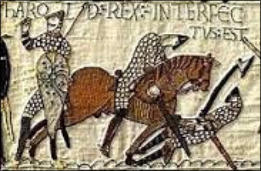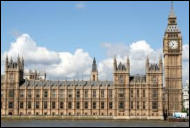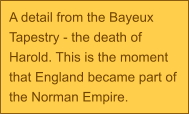



UK Issues - History
The UK has never been a united kingdom
England became part of the Norman empire in 1066 when a certain William the Bastard invaded. The centre of power moved from Normandy to England and, eventually, all the French territories were lost. Wales was added to the English monarchs’ empire but Scotland and Ireland, despite major efforts by many English monarchs, remained as separate monarchies. In those times, the territory claimed by a monarch effectively defined a “country”. Henry VIII made himself King of Ireland and James VI of Scotland took over the English crown which effectively brought all three crowns under one monarch - who ruled from London! They were still regarded as separate monarchies, and therefore separate countries. It was a another 100 years before Scotland and England were joined politically to form “Great Britain”. The term “United Kingdom” was then shorthand for the “United Kingdom of Great Britain and Ireland”. Note that, in all of these changes, “England” really meant “England and Wales” Ireland always resisted attempts to incorporate that island into the English empire, with greater or lesser success at various times. Eventually, Ireland managed to establish its independence from England and Britain in 1922 but it was not until 1949 that it became a republic with all ties with Britain (and the English monarchy) finally severed.
Status change can be painful
Today the English Empire contains two kingdoms (Scotland and England), a principality (Wales) and a province of a former kingdom (Northern Ireland). To try to make the empire more palatable to all the nations ruled from London, it was called the United Kingdom of Great Britain and Northern Ireland. We should always be suspicious of long and grandiose sounding titles invented by the powerful! The trouble is, those in power never quite got used to the idea that, in this union, England was just another member of the “United Kingdom”. The undying habit of referring to “England” when they mean “Britain” and the failure to update our national symbols, has resulted in an attitude of mind which prevents the ruling elite from seeing what Monty Python would call “the bleeding obvious”. So long as the political structure and symbols of the Union remain Anglo-centric, and the attitudes of the establishment remain stuck in the past, the rumblings of dissatisfaction will continue and all four of the “home nations” will, in their various ways, seek to make their own local identities more prominent. Even the English people, as opposed to the ruling elite, are not happy with the present arrangement in that there is no forum in which solely English issues can be debated without involving MPs from the other nations. The West Lothian Question, first posed in 1977, is still not resolved. Recent proposals to address this problem seem only to make the situation worse.
© Walter Jardine 2016


UK/EU





The UK has never been a
united kingdom
England became part of the Norman empire in 1066 when a certain William the Bastard invaded. The centre of power moved from Normandy to England and, eventually, all the French territories were lost. Wales was added to the English monarchs’ empire but Scotland and Ireland, despite major efforts by many English monarchs, remained as separate monarchies. In those times, the territory claimed by a monarch effectively defined a “country”. Henry VIII made himself King of Ireland and James VI of Scotland took over the English crown which effectively brought all three crowns under one monarch - who ruled from London! They were still regarded as separate monarchies, and therefore separate countries. It was a another 100 years before Scotland and England were joined politically to form “Great Britain”. The term “United Kingdom” was then shorthand for the “United Kingdom of Great Britain and Ireland”. Note that, in all of these changes, “England” really meant “England and Wales” Ireland always resisted attempts to incorporate that island into the English empire, with greater or lesser success at various times. Eventually, Ireland managed to establish its independence from England and Britain in 1922 but it was not until 1949 that it became a republic with all ties with Britain (and the English monarchy) finally severed.
Status change can be painful
Today the English Empire contains two kingdoms (Scotland and England), a principality (Wales) and a province of a former kingdom (Northern Ireland). To try to make the empire more palatable to all the nations ruled from London, it was called the United Kingdom of Great Britain and Northern Ireland. We should always be suspicious of long and grandiose sounding titles invented by the powerful! The trouble is, those in power never quite got used to the idea that, in this union, England was just another member of the “United Kingdom”. The undying habit of referring to “England” when they mean “Britain” and the failure to update our national symbols, has resulted in an attitude of mind which prevents the ruling elite from seeing what Monty Python would call “the bleeding obvious”. So long as the political structure and symbols of the Union remain Anglo-centric, and the attitudes of the establishment remain stuck in the past, the rumblings of dissatisfaction will continue and all four of the “home nations” will, in their various ways, seek to make their own local identities more prominent. Even the English people, as opposed to the ruling elite, are not happy with the present arrangement in that there is no forum in which solely English issues can be debated without involving MPs from the other nations. The West Lothian Question, first posed in 1977, is still not resolved. Recent proposals to address this problem seem only to make the situation worse.
UK History






















